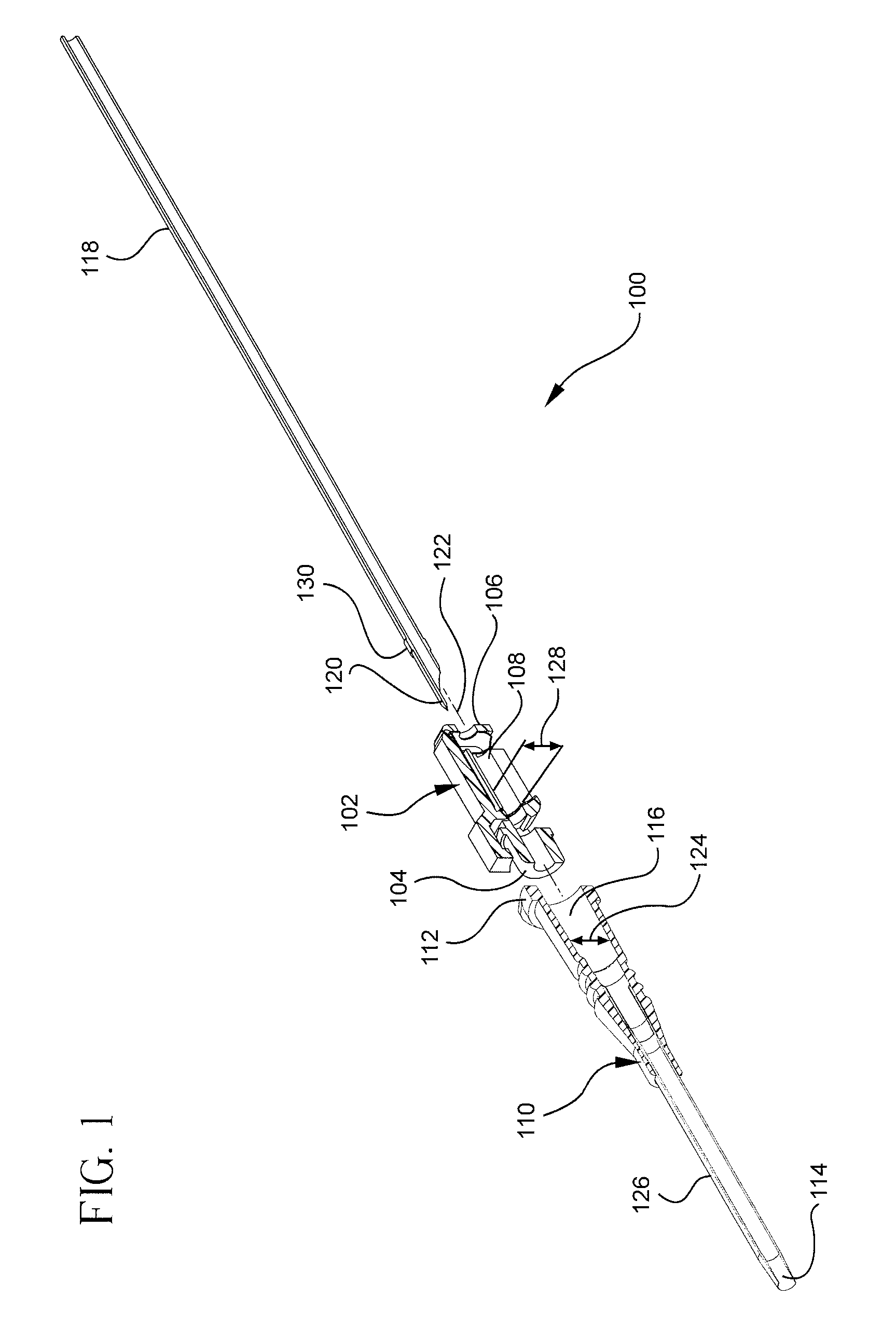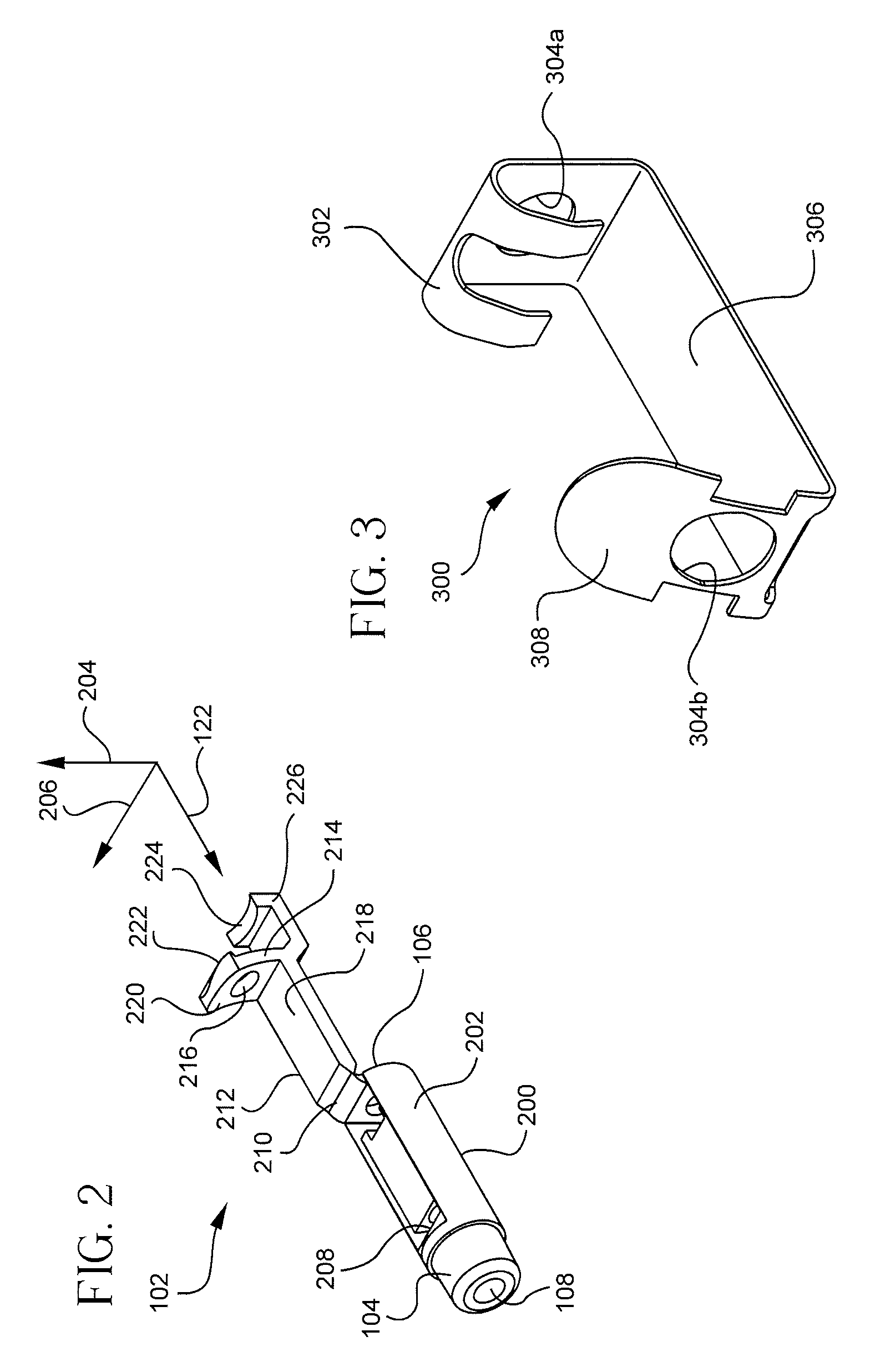Catheter insertion device with automatic safety barrier
a technology of safety barrier and catheter insertion, which is applied in the field of medical devices for inserting an intravenous catheter into a patient, can solve the problems of increased risk of hiv transmission, increased risk of needle stick injury, and devices that require manipulation or disassembly after use, and achieve the effect of reducing the risk of infection
- Summary
- Abstract
- Description
- Claims
- Application Information
AI Technical Summary
Benefits of technology
Problems solved by technology
Method used
Image
Examples
Embodiment Construction
[0031]The illustrated embodiments of the present invention will be best understood by reference to the drawings, wherein like parts are designated by like numerals throughout. It will be readily understood that the components of the present invention, as generally described and illustrated in the Figures herein, may be arranged and designed in a wide variety of different configurations. Thus, the following more detailed description, as presented in the Figures, is not intended to limit the scope of the invention as claimed, but is merely representative of selected embodiments of the invention. The following description is intended only by way of example, and simply illustrates certain selected embodiments of devices, systems, and processes that are consistent with the invention as claimed herein.
[0032]As used in this specification, the term “needle” refers to any of various devices that may be used to pierce the skin to acquire intravenous access, such as a hypodermic needle, a holl...
PUM
 Login to View More
Login to View More Abstract
Description
Claims
Application Information
 Login to View More
Login to View More - R&D
- Intellectual Property
- Life Sciences
- Materials
- Tech Scout
- Unparalleled Data Quality
- Higher Quality Content
- 60% Fewer Hallucinations
Browse by: Latest US Patents, China's latest patents, Technical Efficacy Thesaurus, Application Domain, Technology Topic, Popular Technical Reports.
© 2025 PatSnap. All rights reserved.Legal|Privacy policy|Modern Slavery Act Transparency Statement|Sitemap|About US| Contact US: help@patsnap.com



